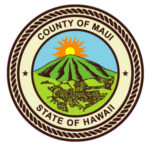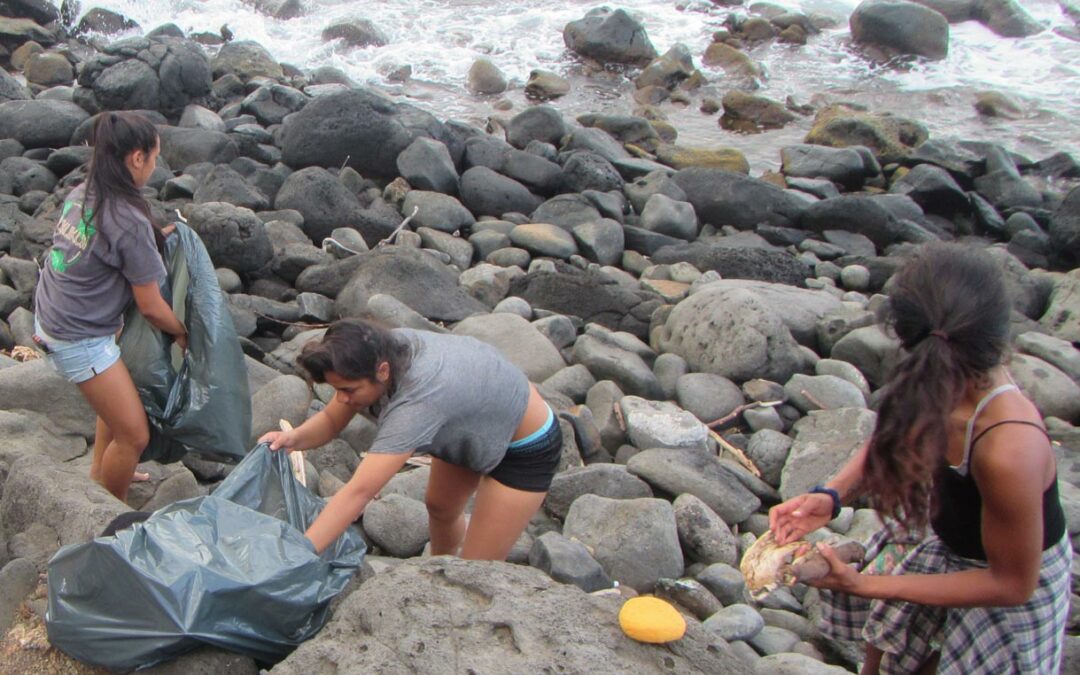
Aug 15, 2018 | Education, Innovation, Stemworks
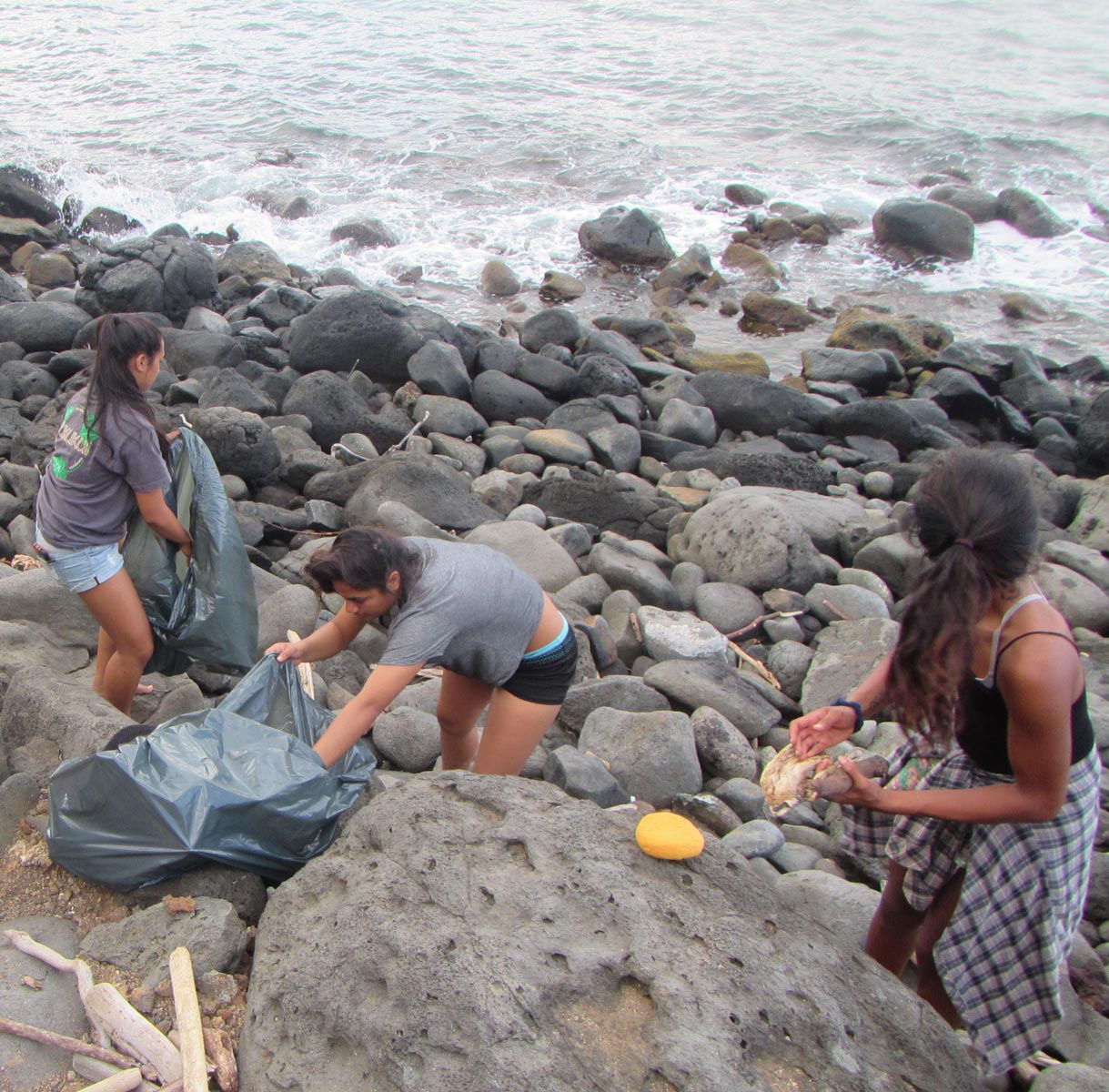
Molokai High School’s (MHS) Mākaʻikaʻi iā grant from Maui Economic Development Board’s (MEDB) Ke Alahele Education Fund provided support for the school’s O Hina I Ka Malama Hawaiian Immersion Program. “The main outcome of the grant produced a series of virtual field trips of environments on Molokai showcasing important natural and cultural resources,” said Gandharva Mahina Hou Ross, Molokai High School Hawaiian Language Immersion teacher and boys’ cross-country coach. “This curriculum model is place and culture- based and uses technology as a way of tying in the state performance standards and making education relevant. The grant gave the students the opportunity to create a website that documents the different environments on Molokai.”
Ross explained, “We took monthly field trips to various marine environments to conduct culture-based inquiry of important marine resources. Students traveled to the northwest, south and east coasts of Molokai to do shoreline monitoring. They collected samples of marine algae, marine invertebrates and marine vertebrates for further investigation in the classroom. Samples were identified with Latin, Hawaiian and common names, along with their habitat, diet, life cycle, traditional Hawaiian uses and management practices. After taking film footage on our field trip, the students used green-screen editing technique to describe what they saw.”
Funds were also used to create an internet domain for O Hina I Ka Malama’s bilingual website as a database to archive our program activities. The marine field guide will be archived on the school website that the students designed. Through the virtual field trips, the grant also enabled the students to create multimedia presentations on Molokai, at the annual MEDB Women in Technology (WIT) STEM (science, technology, engineering, mathematics) Conference, and at Hawaiian Language Immersion schools throughout Hawaii.
“I want to thank MEDB and WIT STEMworks™ for the Ke Alahele grant,” said Kauiwai Poepoe-Mollena, MHS 12th grader. “They provided us with the newest technology resources to complete our field trip tasks such as meter-square plots, ARC GIS mapping, cameras and GPS to mark points at the designated areas.”
On Saturday, August 25, 2018, MEDB will hold their annual Ke Alahele Education Fund Benefit Dinner & Auction at the Grand Wailea Resort. For more information call (808) 875-2300 or email cari@medb.org. Please join us!
Leslie Wilkins, MEDB President and CEO
Aug 8, 2018 | Education, Stemworks

Maui resident Steve McCaughey recently joined a growing number of private-citizen space enthusiasts from all walks of life who serve as NASA Solar System Ambassadors (SSA). The nation-wide SSA program brings the excitement of NASA’s space exploration to children, teachers, and adults in the community. As an Ambassador, McCaughey will deliver information about NASA’s vast endeavor of missions and scientific study, through school programs, planetarium talks, telescope-viewing parties, mall displays and much more.
McCaughey describes himself as a “lover of the night sky.” He first came to Hawaii in 1973 on a 40-foot schooner, with no GPS satellites to help navigate. “We conducted daytime sun sightings at noon and 2pm with a sextant, and computed our position with logarithmic tables,” he explained. “At night I had the 4am watch and I steered the boat by the stars. I fell in love with the constellations and notable objects in the sky that can be observed with binoculars, and I began studying double stars.”
Soon after, McCaughey joined the Hawaii Amateur Astronomers (HAA). He purchased a Celestron 9.25-inch Schmidt-Cassegrain telescope with an equatorial mount on a pier, and a 104mm refractor that he uses for educational outreach. He began attending the University of Hawaii Institute for Astronomy (UH IfA) AstroTalks in Pukalani, and a few years ago helped form the Maui Double Star Association, a group of students and adults who do observations of double stars. Some of the student participants ended up being co-authors on a paper in the Journal of Double Star Observations, and one is majoring in physics because of this experience.
With the inspiration of Dr. J. D. Armstrong, UH IfA Educational Outreach Specialist, McCaughey’s HAA group has conducted astronomy outreach on Maui for the past ten years. They travel to STEM (science, technology, engineering, mathematics) conferences, conventions, schools and other events with their telescopes. “McCaughey’s dedication to community engagement with space science is outstanding,” said Dr. Armstrong. “Regarding his recent NASA Ambassadorship appointment, we look forward to sharing more with him.” For educational outreach information, call (808) 281-2468.
I look forward to bringing the world of NASA and astronomy to those who are interested in ‘looking up’. The youth of today are the ones who will take us on and beyond!
Steve McCaughey, NASA Solar System Ambassador

Aug 1, 2018 | Education, Stemworks

Maui Economic Development Board’s (MEDB) Ke Alahele Education Fund grantee, the Lihikai Elementary School Surferbots in Kahului, applied their grant towards the VEX IQ Robotics challenge events, purchasing parts and registration fees. “This program allows students the opportunity to apply STEM (science, technology, engineering, mathematics) classroom concepts to a technological product,” said Lihikai teacher, Kelly Imada. “It also introduces and reinforces the engineering design process through the challenges of competing with other teams. Our Lihikai robotics program builds interest for students in STEM subjects as they progress through elementary, intermediate, and high-school.”
“Thanks to MEDB, this was the Surferbots’ most successful year,” said Imada. “Our two teams competed in tournaments at Lahainaluna High School and the Valley Isle Tournaments. We were also honored with the Judge’s Award at the Baldwin High School Vex IQ Tournament.”
The Surferbots had fifteen members on two teams and both qualified for State competition at the Hawaii Convention Center. Team A qualified through the skills challenge and made it into the top 16 going to the elimination matches at the 2018 Hawaii State VEX IQ Tournament. Team B qualified by winning the Excellence Award at the Valley Isle Tournament in December and were awarded the Think Award in the State VEX IQ Tournament.
“In addition to building robots and competing, the students learn problem-solving skills, teamwork, responsibility, and commitment,” Imada said. “We are very grateful to the Ke Alahele donors. Without their support we would not be able to provide these valuable experiences in robotics to our students.” The Surferbots agreed, “Robotics helped us understand more about technology and working hard to reach a goal step by step, retrying and improving. Robotics taught us that if you want to achieve something, it takes trial and error, and working together as a team.”
On Saturday, August 25, 2018, MEDB will hold their annual Ke Alahele Education Fund Benefit Dinner & Auction at the Grand Wailea Resort to celebrate the STEM achievements of students in Maui County and statewide. For more information call (808) 875-2300 or email cari@medb.org.
Robotics helped me understand more about technology and working hard to reach a goal. I feel great about being on this team because I get to learn with others.
Surferbot Team Member, Lihikai Elementary School
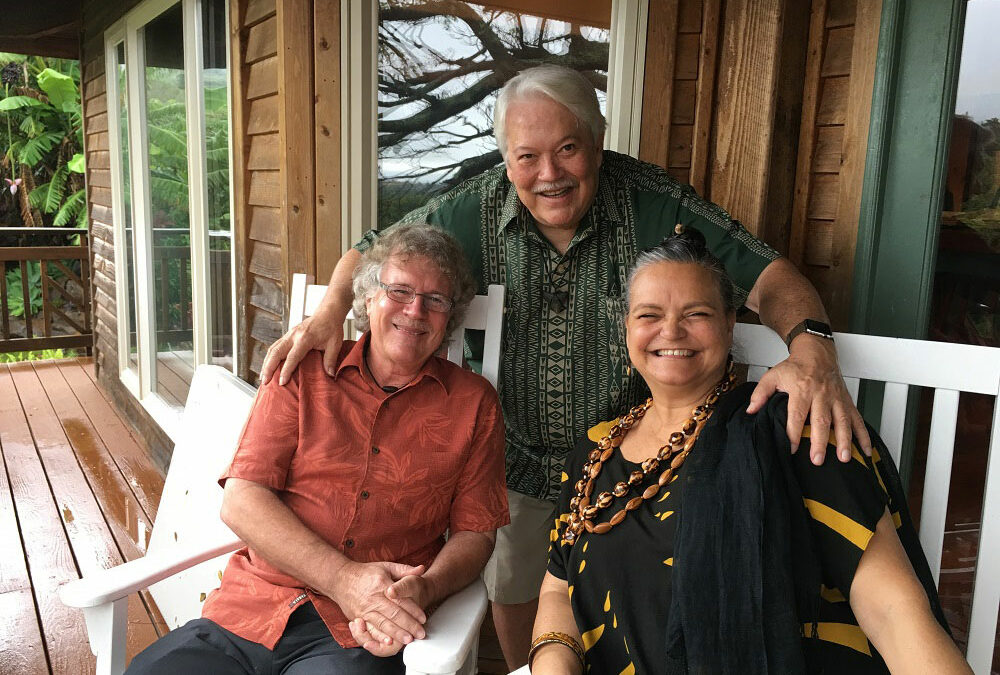
Jul 25, 2018 | Community, Events
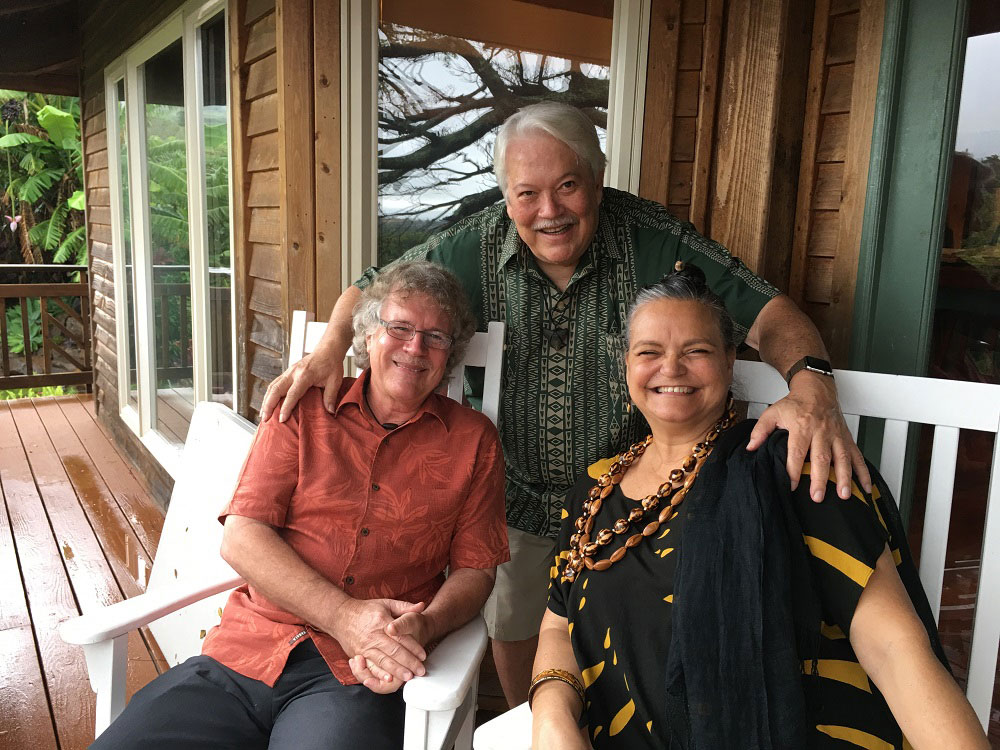
Maui residents Dr. Tom Vendetti, Robert Stone, and Keola and Moana Beamer recently received an award for “Environmental Activism in Film” at the 2018 Taos Film Festival in New Mexico. The award, inspired by the power of films to make positive changes for humanity, coincided with Earth Day. The theme of the 2018 festival was “Finding True Happiness in an Unsettled World”. Dr. Vendetti, Director of Mental Health Kokua, is also an Emmy award-winning director for his documentary films that lead to social change. “We are honored to receive the filmmakers’ activist award recognizing the mission to preserve the environment,” said Vendetti. “In my early twenties, I was convinced that finding the meaning of life was the path to happiness. So, I envisioned my own life as a quest.”
As a doctor and seeker, Vendetti made a multitude of documentaries in the psychological and environmental arena, which brought him insights that later extended into a fascination with other cultures and belief systems. Vendetti still works in mental health. However, his first visit to the Himalayas sparked his other career as an Emmy Award-winning documentary filmmaker.
Robert Stone, an Emmy award-winning director, producer, writer, and cinematographer, and Vendetti have traveled around the globe, co-producing seven films that have gone on to air on the Public Broadcasting System. Additionally, they founded the Angkor Wat International Film Festival in Siem Reap, Cambodia. “Through telling simple stories that open the heart and emotions, we have raised awareness of the sacred in everyday life,” said Stone. “We simply want to make a positive difference that will help all of us.”
Keola Beamer is a multi-award-winning musician, legendary slack key guitarist, and world-renowned Native Hawaiian musician. His wife Moana has expanded her role in his performances through dance, chants, singing background vocals, and playing several ancient Hawaiian percussive instruments. Together, they have been traveling with Vendetti and making films that bring Hawaiian music and dance to the world.
My cause for years has been promoting happiness, as both a psychologist and a filmmaker. Our latest film Tibetan Illusion Destroyer creates awareness of the illusions that cause human suffering.
Dr. Tom Vendetti, Mental Health Kokua, Emmy Award-winning filmmaker
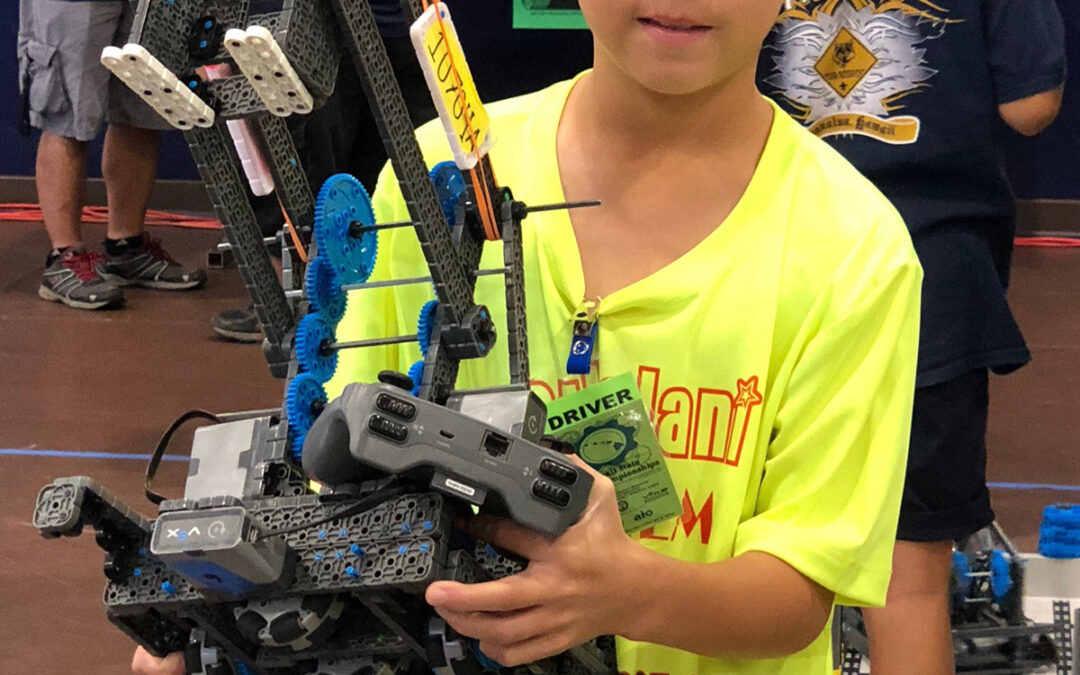
Jul 18, 2018 | Education, Stemworks
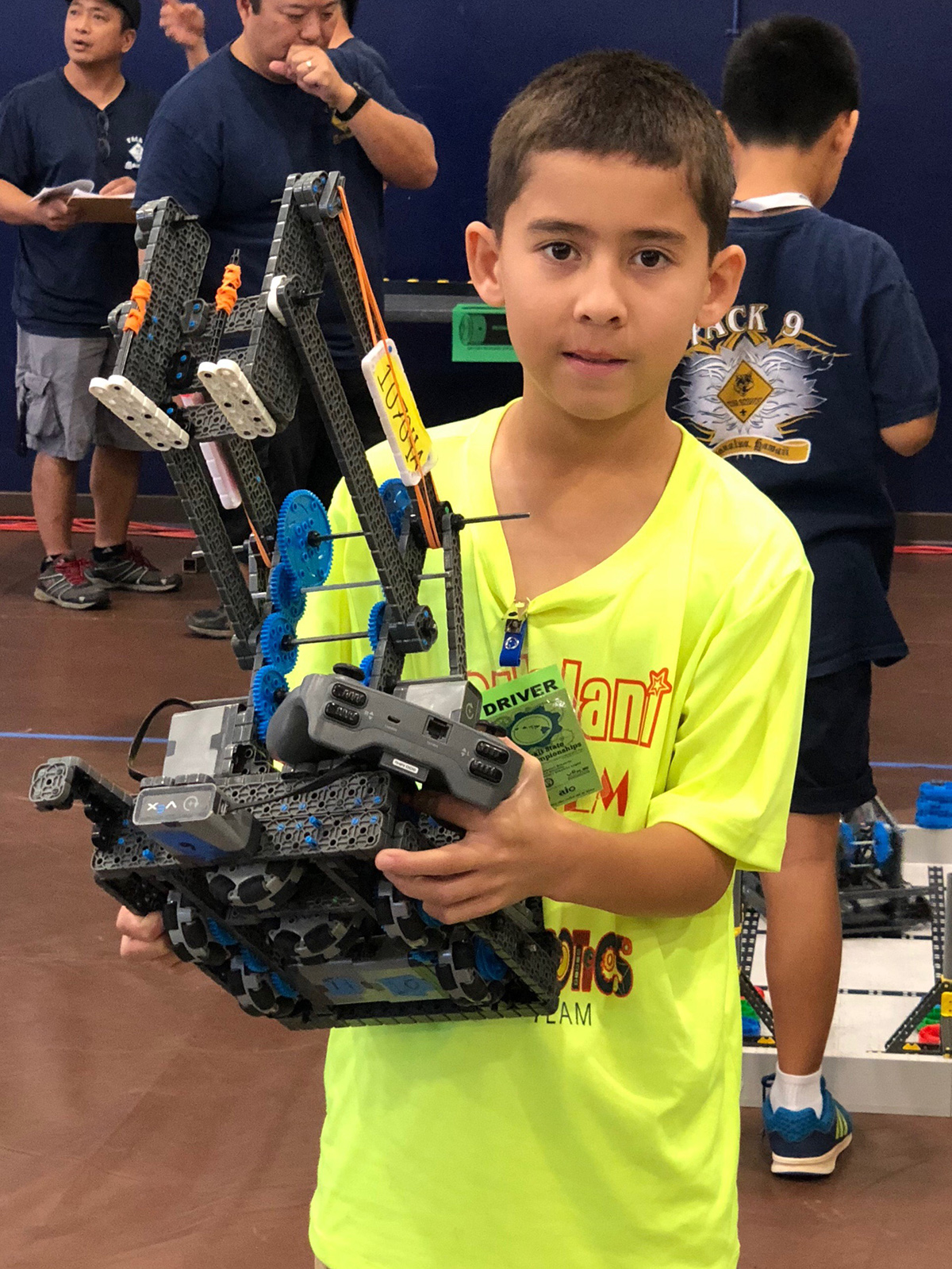 Pukalani Elementary School was most fortunate to have received two Ke Alahele Education Fund grants from Maui Economic Development Board (MEDB), one for the students and one for the teachers. The first funding gave the Pukalani School Imagineers Robotics team the means to travel to Oahu to compete in the Hawaii State Elementary VEX Championship in January of this year. “The VEX competition experience was priceless for the student’s STEM (science, technology, engineering mathematics) curriculum,” said Debbie Hisashima, Pukalani Academic Coach and STEMworks™ AFTERschool Coordinator. “What the students enjoyed most was meeting up with other teams, seeing their drive and motivation, and all of the possibilities that are out there as they advance in age.”
Pukalani Elementary School was most fortunate to have received two Ke Alahele Education Fund grants from Maui Economic Development Board (MEDB), one for the students and one for the teachers. The first funding gave the Pukalani School Imagineers Robotics team the means to travel to Oahu to compete in the Hawaii State Elementary VEX Championship in January of this year. “The VEX competition experience was priceless for the student’s STEM (science, technology, engineering mathematics) curriculum,” said Debbie Hisashima, Pukalani Academic Coach and STEMworks™ AFTERschool Coordinator. “What the students enjoyed most was meeting up with other teams, seeing their drive and motivation, and all of the possibilities that are out there as they advance in age.”
Pukalani 5th grader Kamaha`o Akana explained, “I learned so much from the Oahu Waialua Robotics Team before the start of competition. Watching the Waialua students work and seeing their drive and motivation was the greatest lesson of all. They kept on trying to adjust without giving up– which was helpful for us to notice when we ran into our own obstacles at the competition. We adapted quickly and tried our best.”
Robotics team member Kayden Volner added, “I enjoyed watching how the robots at the state level functioned. Our team observed different designs and changed our robot to be more efficient so that it would be competitive at the Create U.S. VEX National Championships. Most importantly, I learned that working together will get the job done.”
Hisashima said, “The second Pukalani School grant was written for our afterschool STEMworks™ teachers to attend the Hawaii State STEM conference on Oahu. It was the teachers turn to learn and we were really excited! Six of us participated in various STEM-related classes, which allowed us to network with other teachers from around the state. Three of our teachers ran mini-STEM sessions in the STEMworks™ Playground and gained valuable presentation skills in the process. With the funding from MEDB, our STEM teachers were able to meet with industry leaders and take new ideas back to our campus and our children.”
“Join us Saturday, August 25, for our annual Ke Alahele Education Fund Benefit Dinner & Auction at the Grand Wailea Resort. The Fund provides tools for our students and training for our teachers, investments that will make a difference in our community.” For more information call (808) 875-2300 or email cari@medb.org.
Leslie Wilkins MEDB President and CEO

Jul 11, 2018 | Education, Innovation, Stemworks
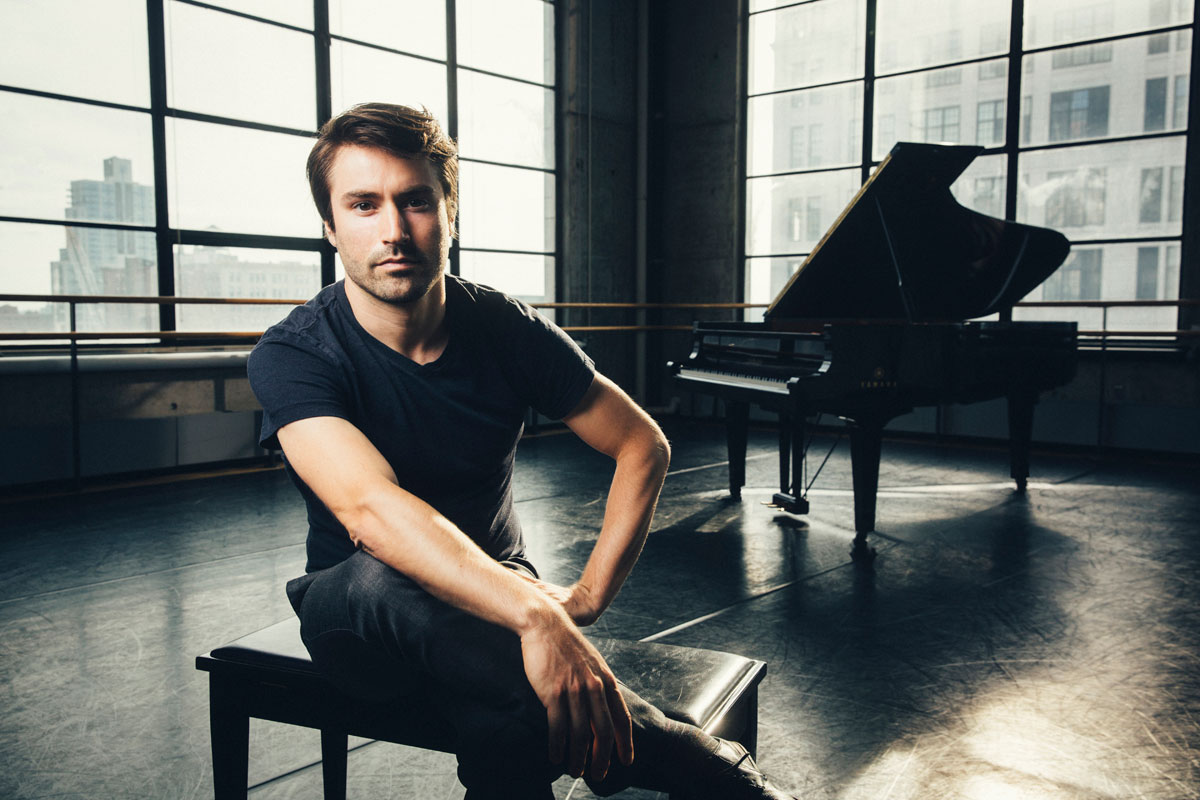
A recent talk at the University of Hawaii’s Institute for Astronomy focused on Listening to Planetary Orbits. Dan Tepfer, master pianist and astrophysicist, said to a captivated audience, “With most things, I’ve found, what’s very interesting is not the thing in itself, but rather its relationship to other things. Everything is relative, which is why harmony, pitch, and rhythm are so stunning in the relationships among the orbits of the planets around Trappist-1, a dwarf star about 40 light years away from us.”
Tepfer told how it is only in the past 25 years that we have been able to detect planets in orbit around stars other than our own, by measuring faint dips in a star’s brightness as planets pass in front of it. What makes the Trappist-1 system unusual is the existence of harmonious relationships among its planetary orbits. The farthest planet completes an orbit every 18 Earth days and the next farthest once every 12. Tepfer explained, “In the time it takes the farthest planet to go twice around the star, the next farthest has gone around three times. This same ratio can be expressed as a musical interval, which allows us to hear the structure of the planetary system.” In other words, we can listen not only to our own solar system, but to other planetary systems as well. Tepfer used a sound synthesizer to play this and other orbital harmonic intervals for the audience, an unforgettable experience for many of those present.
“We hear sound when the air around us vibrates and those vibrations reach our ears. Vibrations are like orbits: they repeat at a certain frequency,” Tepfer said. “With the Trappist-1 system, it is not only the outer two planets that orbit in resonant harmonic relationships. Surprisingly, all seven do—the only planetary system discovered so far with so many resonant orbits. Without approximating the orbits in any way, by just presenting the data scaled up to our range of hearing, we hear what we readily identify as harmonious music.”
Trappist-1 is located 39.6 light-years from the Sun in the constellation Aquarius. Seven terrestrial planets have been detected orbiting the star, a larger number than detected in any other planetary system.
Dan Tepfer, Astrophysicist and Master Pianist
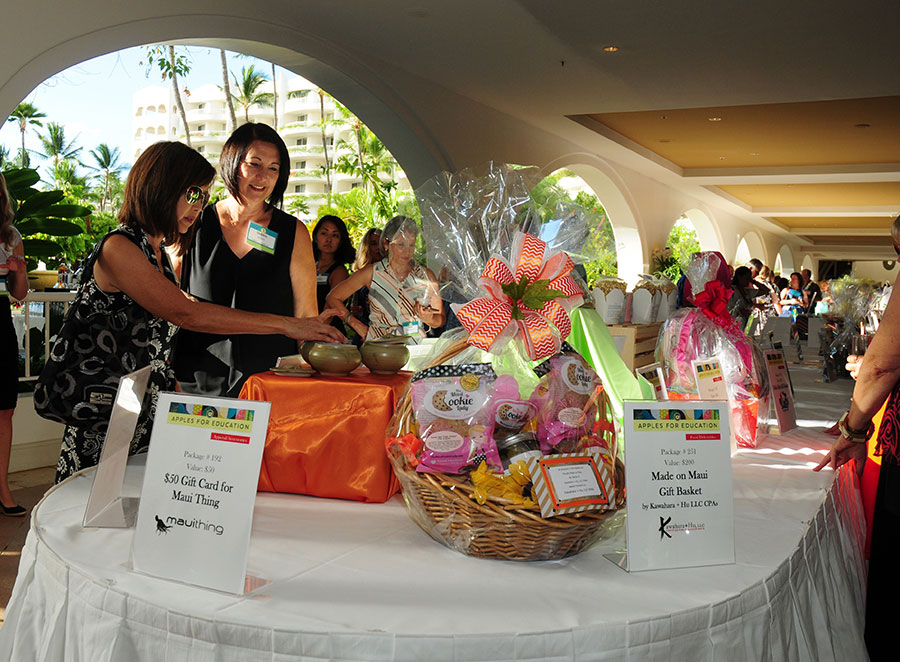
Jul 4, 2018 | Education, Stemworks

On Saturday, August 25, 2018, Maui Economic Development Board (MEDB) will hold their annual Ke Alahele Education Fund Benefit Dinner & Auction, I ♥ STEM, at the Grand Wailea Resort to celebrate the STEM (science, technology, engineering, mathematics) achievements of students in Maui County and statewide. “The Ke Alahele funds provide state-of-the-art technology tools for our students and training for our teachers, investments that will make a difference in the lives of our residents and our community,” said Leslie Wilkins, MEDB President and CEO. “MEDB partners with the private, public and nonprofit sectors to reach its goal of helping the next generation soar into the future.”
MEDB recently announced that recipients received Ke Alahele Education Fund STEM grants totaling more than $142,000 during the 2017-2018 school year. The Ke Alahele event celebrates the Fund’s impressive giving which enhances education and training. MEDB will also present the Daniel K. Inouye (DKI) Innovation Award honoring the late Senator who inspired our youth and provided STEM opportunities throughout Hawaii.
“The DKI awards are presented to a Maui County student or team that demonstrates the most innovative use of STEM tools to improve our community,” Wilkins explained. “Students select a societal issue and then, by using sophisticated technology and possibly inventing their own tools, they create a real solution to address the community challenge.”
Agreeing, Curtis Tom, Maui County Senior Vice President Bank of Hawaii and Chair of the MEDB Education Fund, said, “Jobs today and in the future depend on the preparation of our students in critical thinking, problem solving, communication, collaboration, and creativity—all skills nurtured by STEM education. Those who support the MEDB Ke Alahele Fund through our annual fundraiser are helping to make this investment in our state’s future workforce.”
This year’s popular “Apples for Education” Silent and Live Auctions offers a great opportunity for donors to showcase their products and services to the 550+ guests, and for both donors and guests to contribute to a great cause! For more information call (808) 875-2300 or email cari@medb.org.
The MEDB Ke Alahele Education Fund Benefit Dinner & Auction will begin at 4:30 pm, followed by Dinner and Live Auction at 6 pm. Please join us!
Leslie Wilkins, MEDB President & CEO
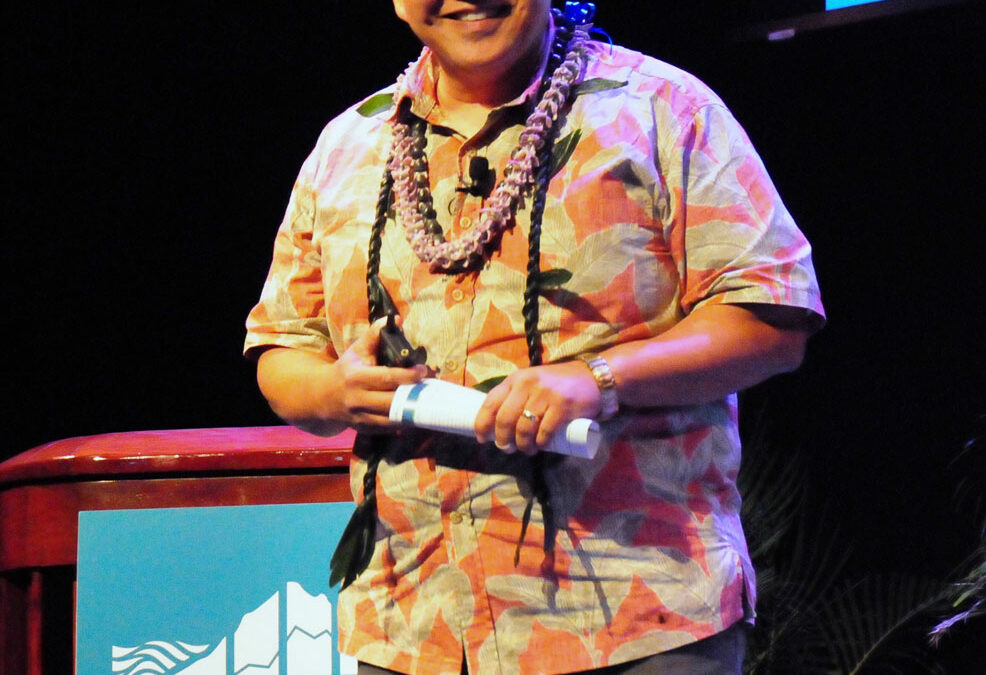
Jun 27, 2018 | Community
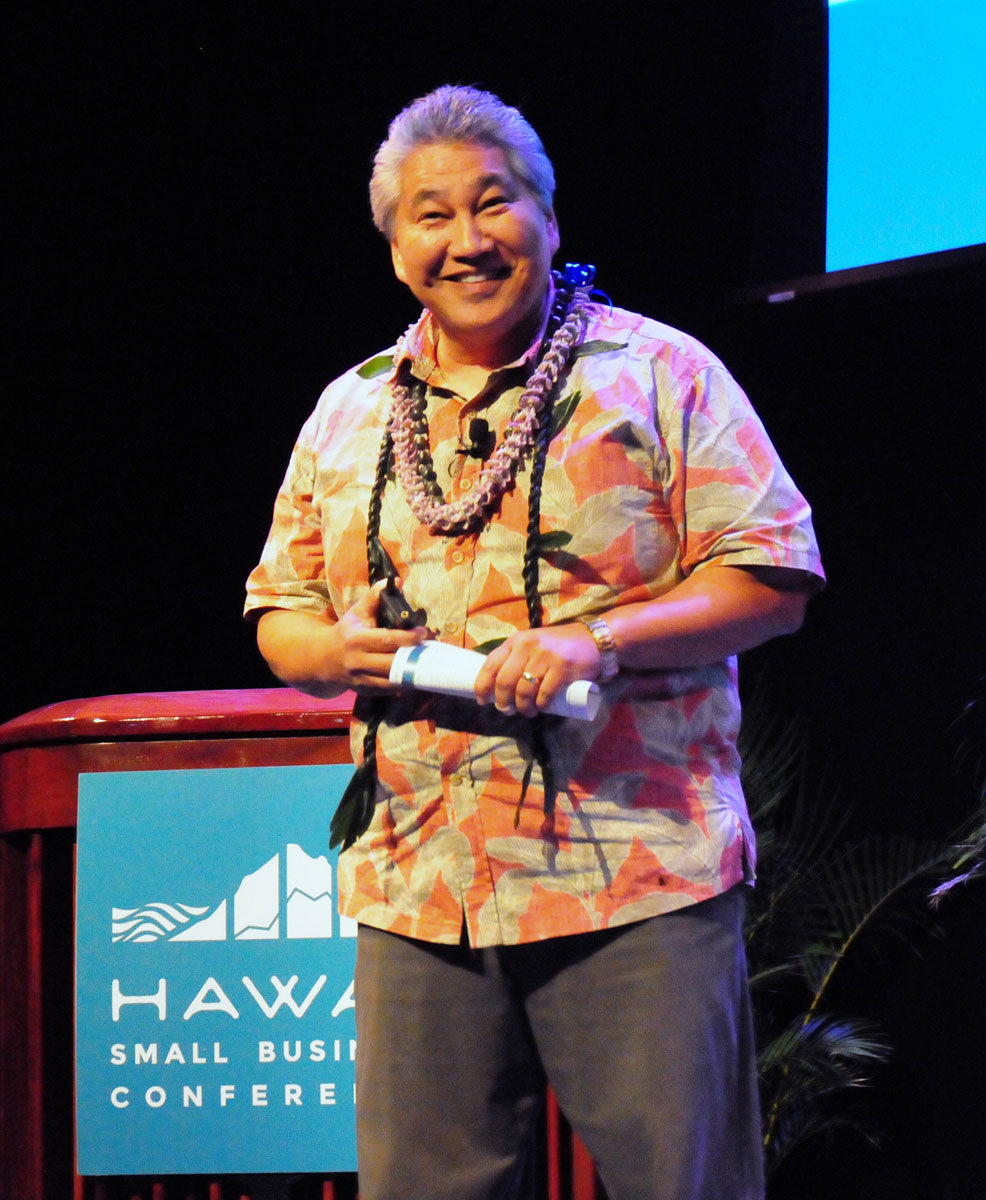
Ramsay Taum, a speaker at the 2nd Annual Hawaii Small Business Conference, wowed the audience with his talk on the integration of Native Hawaiian cultural values and principles as a key to effective service in business. Taum, an internationally recognized cultural resource speaker, lecturer, trainer and facilitator, promotes sustainable practices based on Hawaiian stewardship principles. He is the founder and president of Life Enhancement Institute of the Pacific; and Director of External Relations & Community Partnerships at the University of Hawaii School of Travel Industry Management.
“Aloha is a way of being, a way of behaving,” Taum said. “Aloha is more than a greeting. It is the art and spirit of giving and receiving. It is to give and not expect anything in return, and to receive and not forget to give back. It speaks of sustainability and reciprocity, rights and privileges, responsibilities and obligations. We must act ourselves into these new ways of thinking.”
Mentored and trained by respected kupuna (elders), Taum is a practitioner and instructor of several Native Hawaiian practices and sits on numerous advisory boards. He advocates team building, strategic partnerships, community brilliance and creative thinking. He graduated from the Kamehameha Schools, attended the U.S. Air Force Academy at Colorado Springs, and earned a B.S. degree in Public Administration from the University of Southern California. Taum is especially effective working with Hawaii’s travel, leisure, and retail industry where he integrates Native Hawaiian values and principles into contemporary business practices.
“Before manifesting any idea, declare the context of aloha for the idea!” Taum exclaimed. “You have to live aloha, share aloha and be aloha! Service, mana, and aloha are more than words. It’s the way we use those terms that matters most. For example, saying mahalo means more than just thank you. It means we are connected by commitment.”
Taum concluded, “Ha in the words aloha and mahalo is the breath that connects us all. Knowing that Ha is the spirit of the air that we all share, we realize we are connected to the spirit of the community, and the spirit of everything.”
A high-integrity, values-driven business model based on true Hawaiian values is the key to success.
Ramsay Taum, Life Enhancement Institute of the Pacific
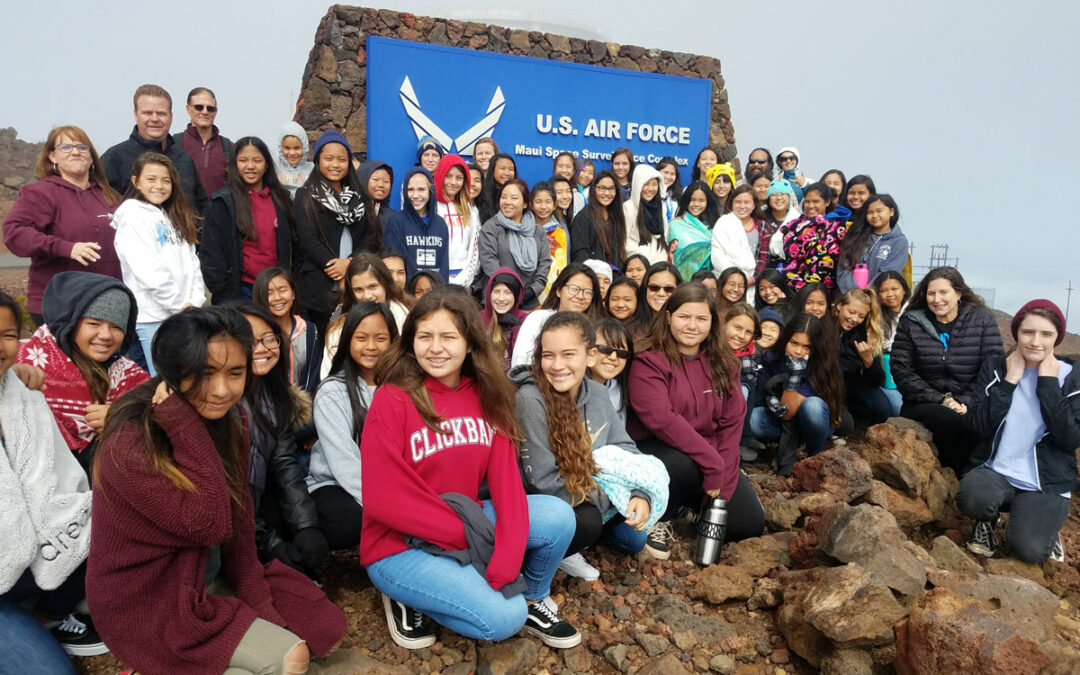
Jun 20, 2018 | Education, Innovation, Stemworks
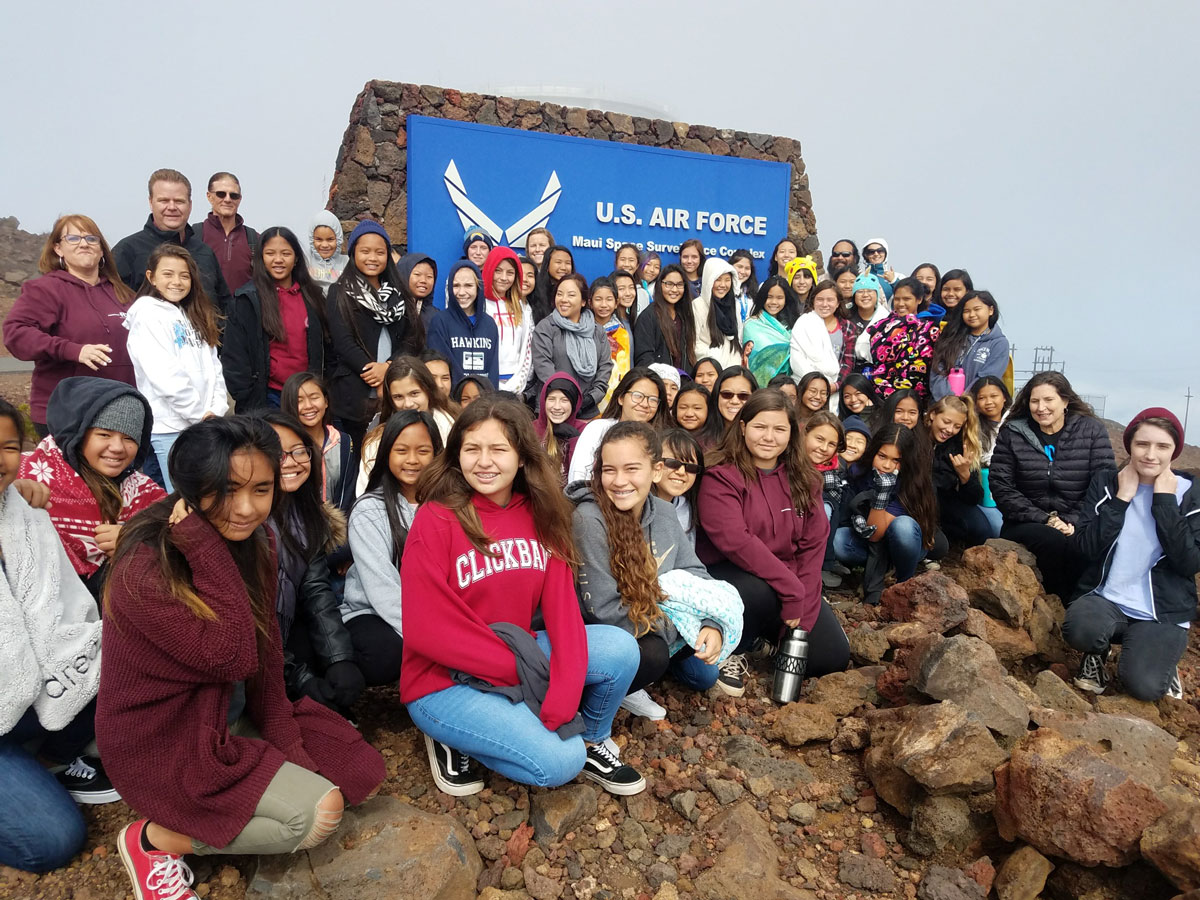
Maui Economic Development Board’s (MEDB) Women in Technology Program (WIT) recently presented their 2nd Introduce a Girl to Astronomy Day (IGAD) for Maui girls, grades 7-8. For the past decade, MEDB and WIT have been at the forefront of providing cutting-edge STEM (science, technology, engineering, mathematics) programs across the state to meet 21st century workforce demands. “IGAD stimulates girls’ interest in astronomy as a viable and exciting career choice that requires STEM education,” said WIT Project Manager Mapu Quitazol. “It’s important to expose our girls to endless STEM opportunities and build their confidence level to know they can achieve their dreams.”
Dr. J. D. Armstrong, Maui Technology Education and Outreach Specialist at University of Hawaii’s Institute for Astronomy, agreed, “It is important to develop future leaders in our planning for Maui’s future. For example, during IGAD the students learned about the Faulkes Telescope North, a two-meter-aperture telescope that can be accessed over the internet by any students in Hawaii and globally for their science projects. Owned and operated by Las Cumbres Observatory, this unique worldwide network of robotic telescopes engages students in real science via their computers. They become active participants in a range of astronomical research projects, from observations of the solar system to distant stars and galaxies.”
Krystle Dunn, science teacher from Lahaina Intermediate, said, “I was impressed by the variety of information that students got to take in: astronomy, satellites, telescopes and hands-on activities with sensors. One of my students learned that being a part of the Air Force doesn’t always mean you have to be in combat–you can be involved through technology and other STEM fields. Many students made connections that might directly impact their future decisions.”
Jaycie Iha, Maui Waena Intermediate student, concluded, “I’m so grateful to MEDB and WIT for this chance to learn more about astronomy and engineering. IGAD was such an extraordinary and valuable experience. After visiting the observatories, I see there are opportunities for girls on Maui to reach for the stars!”
Seventy-five middle school girls from Maui County enjoyed learning about optics by touring the Maui Surveillance Space System facilities atop Haleakala.
Mapu Quitazol, MEDB WIT Program Director
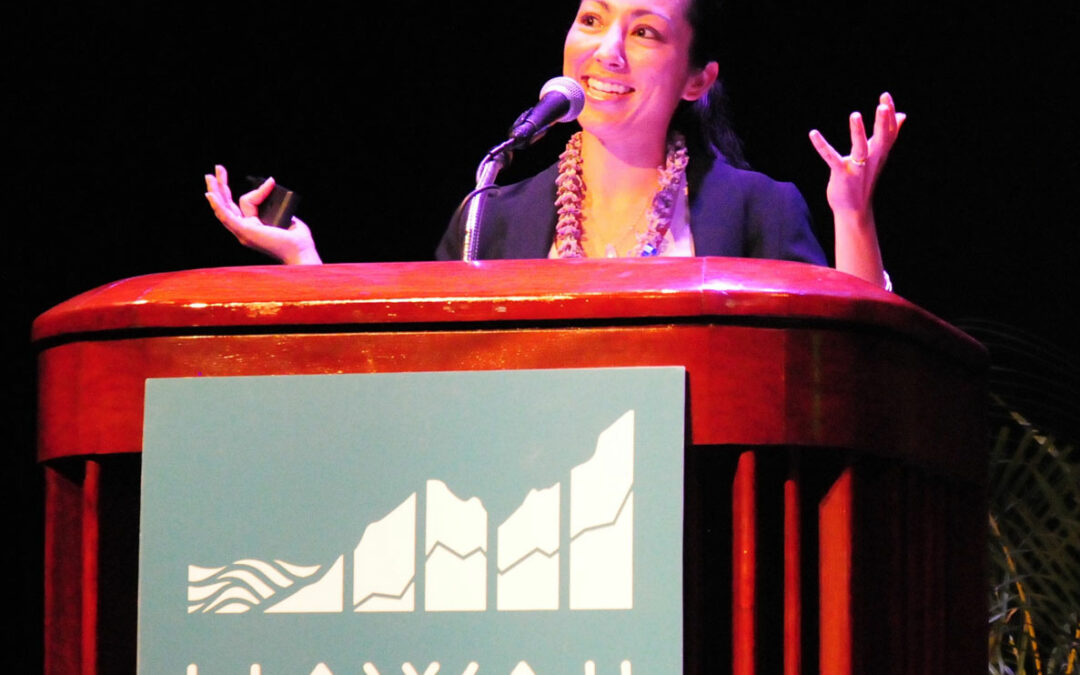
Jun 13, 2018 | Community
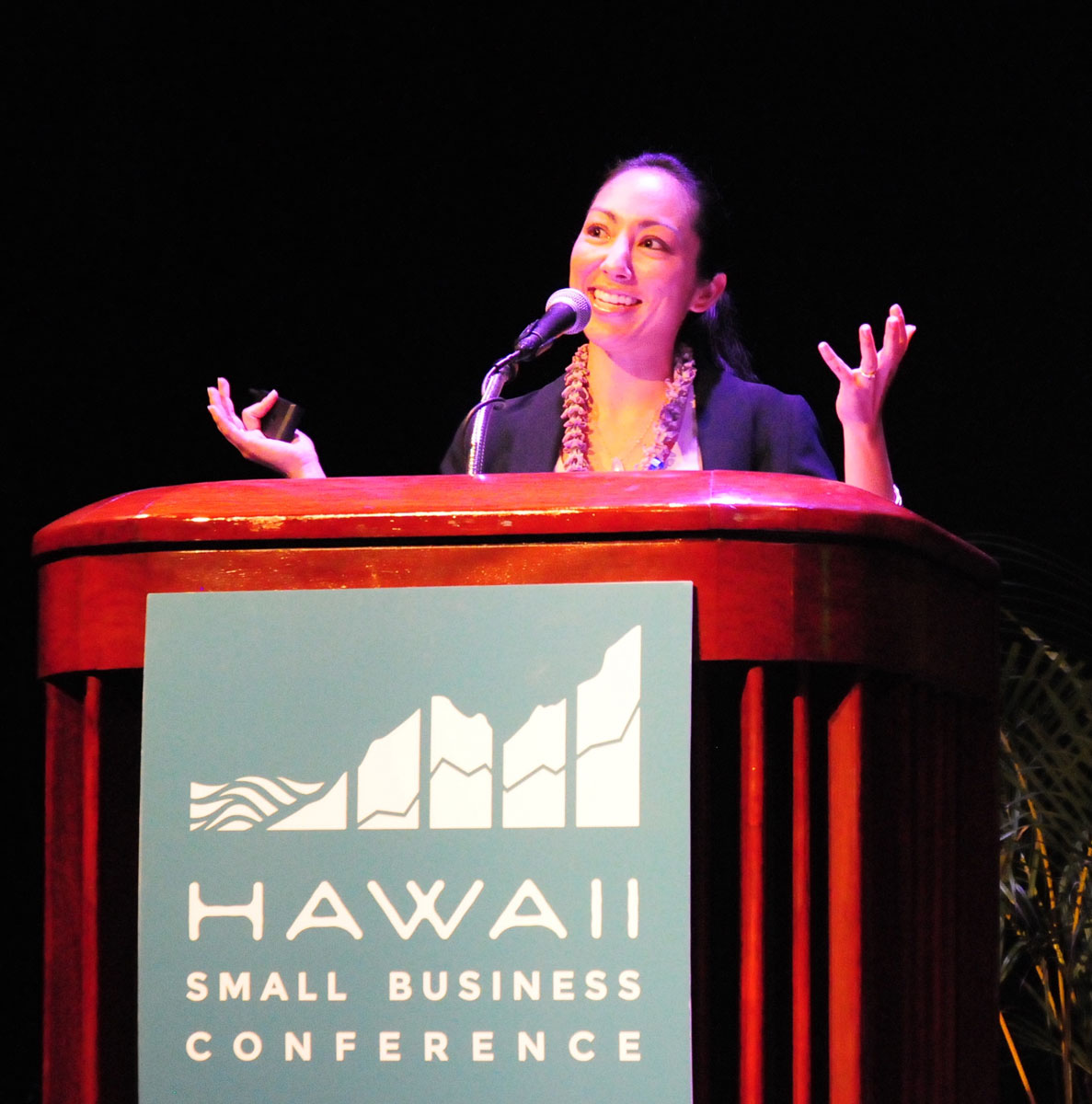
Maui Economic Development Board (MEDB), in collaboration with Maui County’s Office of Economic Development, presented the 2nd Annual Hawaii Small Business Conference (HSBC) at the Maui Arts & Cultural Center in May. The conference attracted over 200 people who heard from approximately 20 national and local business leaders and successful business owners during the two-day conference and workshops.
“We were thrilled with the diversity of attendees who truly reflected our small business community,” said Leslie Wilkins, MEDB President and CEO. “The HSBC aims to provide timely strategies to re-energize small businesses on their path to success. Everyone came to learn, share, network, and do business together.”
This year’s theme, Plan, Build, Grow: Mapping A Pathway to Success, emphasized taking any business, one-person or large-size company, to the next level. Diversity also described the topics that were covered: employer and customer engagement, staffing for success, scaling one’s business, shaping a plan for growth, keeping your business relevant, establishing a social media strategy, when to pivot a business, tax strategies, living aloha in business, and how to select and protect a company trademark.
Keynote speaker Karen McCullough, a well-known customer and employee engagement expert, discussed how organizations and leaders can cut through generational stereotypes by leveraging their team’s strengths, and enriching the work environment for better results. Additionally, McCullough’s topic, Going Beyond Your Brand—Delivering WOW Service, focused on how “your brand is the core of your company, the heart of your business, the soul of your culture and the foundation for a great customer experience.”
In a Talk Story session, Ashley Takitani Leahey, co-owner and Marketing Director of Maui Thing, shared the company’s story and what drives their success. “Our brand portrays the essence of living on the Valley Isle and is built on our slogan, Stuck on Good,” Leahey said. “We follow these guidelines: Build your brand; Create experiences; Track and analyze; Collaborate and listen; Work towards community partnerships and Mix your products with events. Whatever your business, if you’re passionate and believe in what you’re marketing, you’ll be successful!”
Maui Thing started in 2007, selling shirts online and in the office. In 2008 we opened the Wailuku store creating memories built by friends, family, and our community.
Ashley Takitani Leahey, Co-Owner & Marketing Director, Maui Thing, Wailuku

















